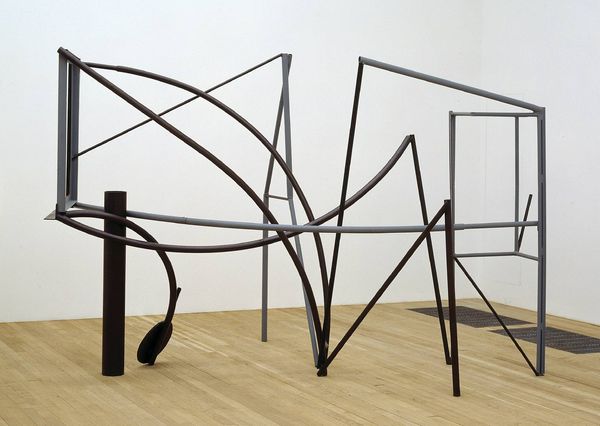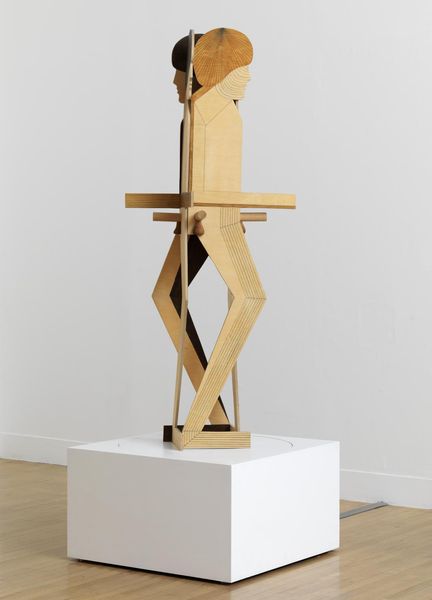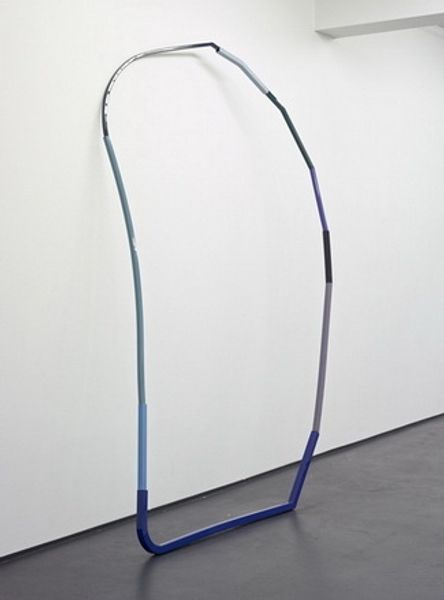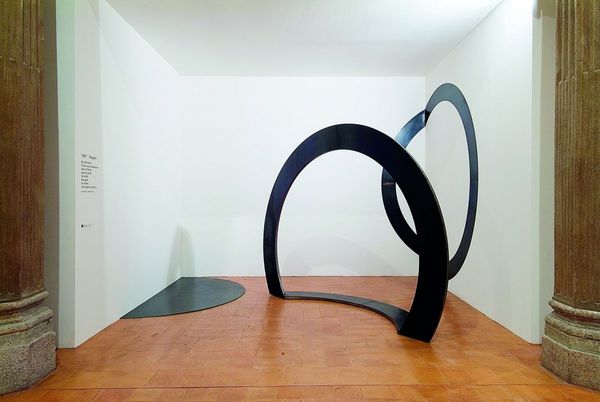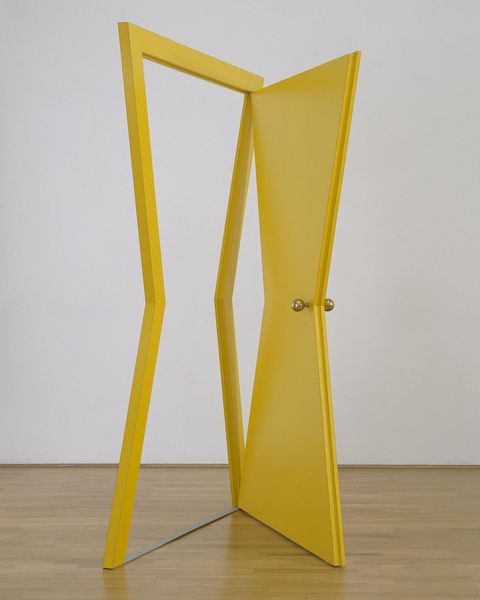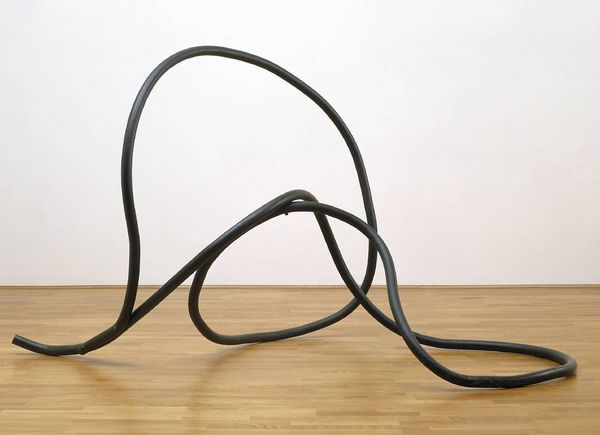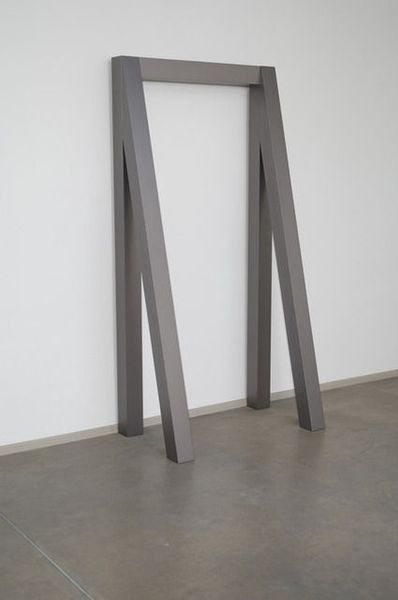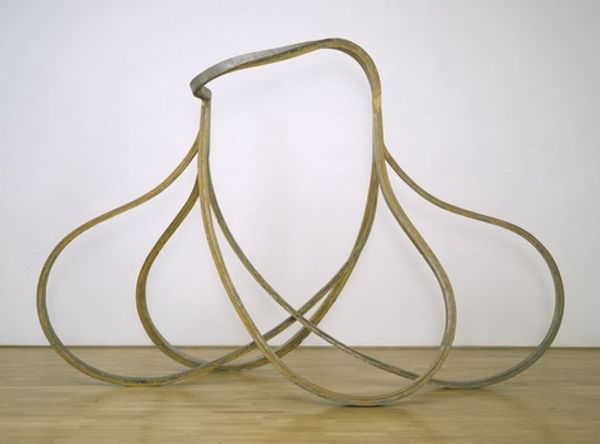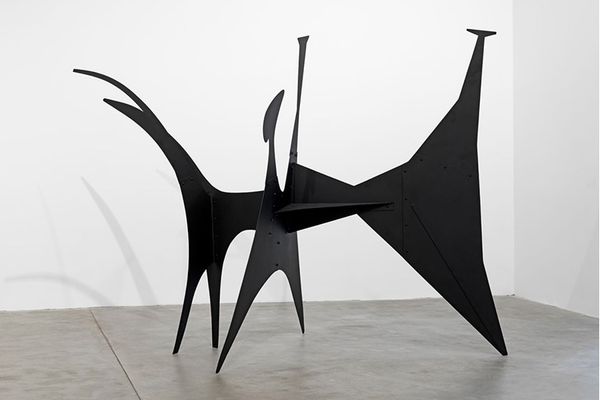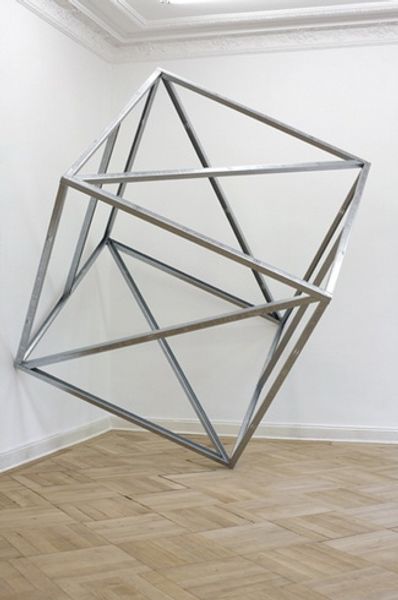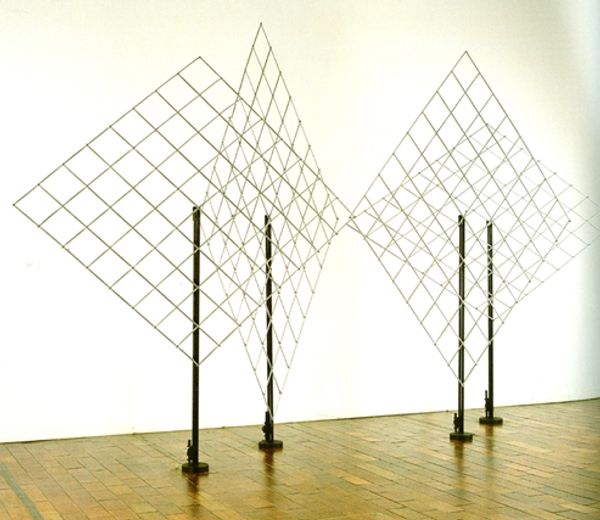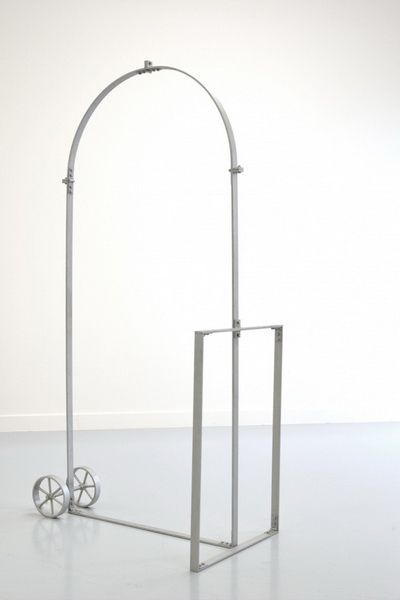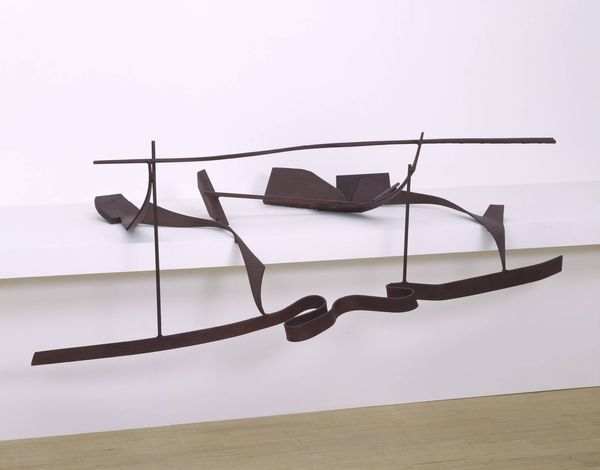
Dimensions: object: 1968 x 2000 x 1810 mm
Copyright: © William Tucker | CC-BY-NC-ND 4.0 DEED, Photo: Tate
Editor: Here we have William Tucker's 'Shuttler B,' currently held at the Tate. The shapes are so simple, almost childlike, but the dark color and massive scale give it a serious, almost brooding presence. What do you see in this piece? Curator: The sculpture echoes prehistoric building forms—dolmens, early shelters. Notice how the timbers meet, forming a protective enclosure. This evokes a primal sense of home, of sanctuary, wouldn't you agree? Editor: I do see that now, like the frame of a house. A very abstract house. Curator: It transcends mere shelter, though. The skeletal structure implies something more – a cultural memory of building, a symbolic representation of our need for protection and belonging. What does that mean to you? Editor: It’s interesting to think about the deeper meanings in something that looks so simple. Curator: Exactly! We often unconsciously embed powerful symbols and ideas within even the most abstract forms.
Comments
Join the conversation
Join millions of artists and users on Artera today and experience the ultimate creative platform.
tate 8 months ago
⋮
One of William Tucker’s aims during the 1970s was to focus on the essential qualities of sculpture, in contrast to any other art form. Works such as this are difficult to ‘read’ visually, despite their apparent simplicity. As with many minimal objects, it is impossible to grasp its structure at a glance; you must move around the sculpture physically in order to understand its form. In this sense, Tucker succeeded in producing works that are the opposite of images. Gallery label, August 2004
